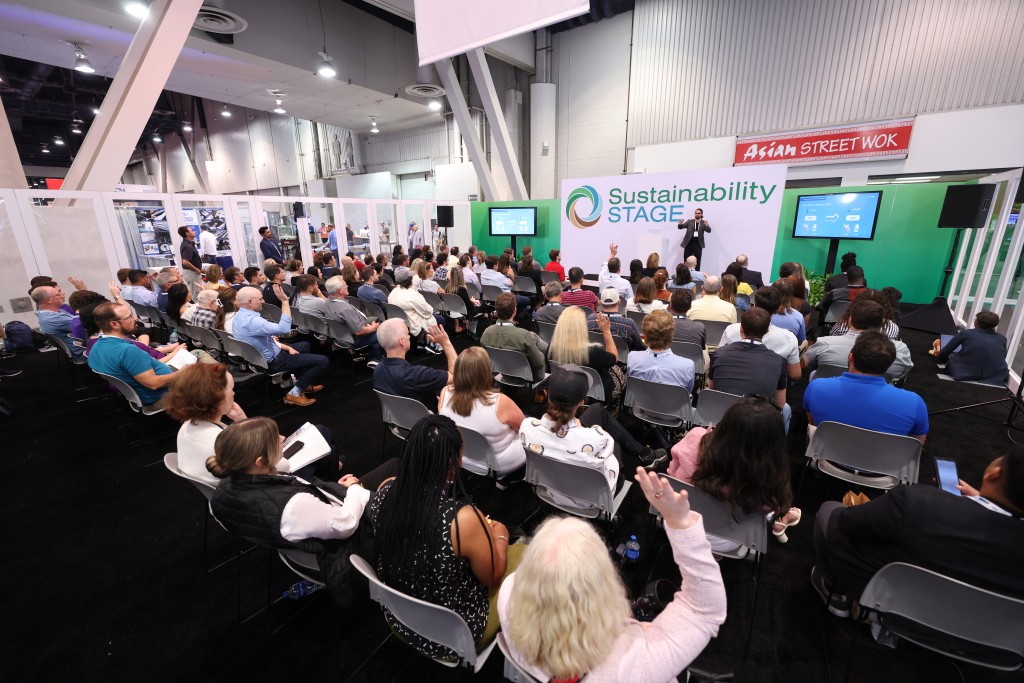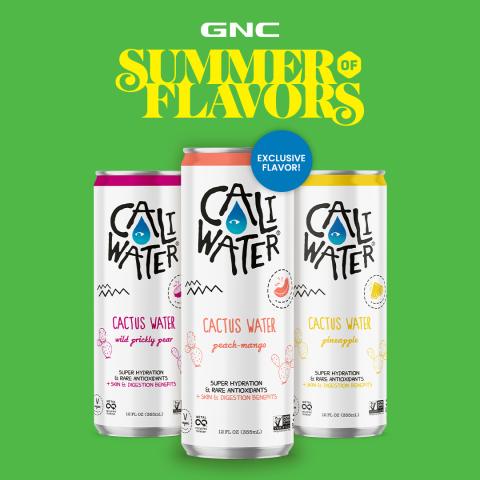By Rebecca Marquez, Director of Custom Research, The Association for Packaging and Processing Technologies (PMMI)
As the world suffers through heat waves, more frequent and powerful hurricanes, wildfires, and floods, consumer packaged goods (CPG) companies are being pushed by consumers and legislators to reduce their carbon footprint and support a circular economy.
This is prompting greater emphasis on setting environmental, social, and governance (ESG) goals, reducing the use of plastic, especially single-use plastic, specifying recyclable and recycled-content materials, transitioning to renewable materials, adopting compostable packaging, and embracing refill/reuse concepts. Such changes require transparency, collaboration, and the use of supporting tools like digitalization.
Digital technologies can optimize material usage, reduce waste, and promote recycling and reuse. For example, artificial intelligence (AI) can capture and analyze data to design packaging that delivers structural integrity with minimum resources. Using 3D printing technology to create packaging prototypes generates less waste. Smart packaging with radio frequency identification tags or QR (quick response) codes can provide instructions about proper disposal or recycling of empty packaging, and blockchain technology can deliver the transparency and traceability consumers need to be confident that packaging materials are sourced responsibly and the production process adheres to environmental standards.
Transparent communication about a brand’s sustainability journey is equally vital. Sharing the environmental impact of packaging choices, production methods, and partnerships enables brand owners to build trust with their customer base. Consumers increasingly expect this transparency and are more likely to support companies whose values align with their own.
Setting ESG Goals
Corporate ESG initiatives, which extend far beyond packaging, are being adopted by a growing number of CPG companies. Firms with ESG strategies reap many benefits, such as diverting tons of plastic waste from landfills, saving energy, improving productivity, and increasing profits, according to Sustainability and Technology – the Future of Packaging and Processing, a report published by PMMI Business Intelligence, a division of PMMI, The Association for Packaging and Processing Technologies.
The report lists many tactics used to achieve ESG goals including installing new equipment to enable a change to a more sustainable packaging format, adopting renewable energy, minimizing truck transport, and reducing corrugate waste. ESG commitments also include considering end-of-life disposal when designing new packaging and joining efforts such as the Amazon Climate Pledge.
Whatever action is taken, transparency is imperative. Consumers want to know what ESG goals brand owners are setting and what progress is being made. The government wants to know, too. On March 6, 2024, the U.S. Securities and Exchange Commission issued The Enhancement and Standardization of Climate-Related Disclosures: Final Rules, which require some publicly traded companies to include climate-related disclosures in their annual reports starting in 2026. This will necessitate data collection and disclosure about Scope 1 direct greenhouse gas (GHG) emissions by the company and/or Scope 2 indirect GHG emissions related to the purchase of electricity, steam, heat, or cooling. Deadlines vary depending on the type of registrant. (1)
California and the EU have moved a step further and established requirements for some companies to report Scope 3 GHG emissions from their upstream and downstream value chain. In the EU, the Corporate Sustainability Reporting Directive requires large, listed companies to begin reporting Scope 3 emissions in 2025. California is phasing in its rule, which applies to private and public companies operating in the state that generate more than $ 1 billion in revenue. (2)
Collaboration Is Needed
Sustainable processes and packaging cannot be achieved in isolation. More companies are now partnering with packaging suppliers to develop innovative solutions that meet both environmental and product protection and preservation goals. Manufacturers, suppliers, retailers, and other stakeholders work together to optimize designs, explore new materials, and streamline packaging production. Packaging supplier partnerships also help brands understand material availability, ensuring they meet evolving regulatory standards without compromising product quality.
No packaging initiative can succeed without consumer buy-in. Many brands are investing in educating customers about proper disposal practices, recycling protocols, and the environmental benefits of the materials used. Labels often include detailed recycling instructions, encouraging consumers to make responsible choices.
Taking Action
As customers demand products with smaller ecological footprints, many CPG companies are reducing plastic content and/or transitioning from non-recyclable plastics to alternatives like paperboard boxes, biodegradable films, and recyclable plastics. Brands also are shrinking their total packaging footprint through smarter design. Many are exploring using thinner yet durable bags and liners that minimize packaging layers without sacrificing product integrity and light-weighting containers and closures.
To overcome the issue of single-use plastics and reduce the amount of healthcare packaging that is landfilled or incinerated, the Healthcare Plastics Recycling Council is studying how healthcare packaging could achieve circularity via advanced (also described as molecular or chemical) recycling and has published Guiding Principles on Advanced Recycling. (3)
When plastic packaging is chosen, there is greater emphasis on specifying recyclable plastics, ideally with post-consumer recycled content. The ability to be processed and reused in future packaging reduces virgin material use and provides circularity.
Renewable materials, derived from plant-based sources, are being viewed in an increasingly favorable light because they relieve dependence on fossil fuels, and some are biodegradable and/or compostable. Compostable packaging is expected to be one of the fastest-growing formats, according to the Packaging Compass report, produced by PMMI and AMERIPEN.
Although still emerging, the reusable packaging model is gaining traction, particularly for health and beauty and household chemical products. This approach seeks to eliminate single-use packaging by encouraging customers to bring their containers for refills or participate in deposit-return schemes. One early adopter of reuse is Stratus Vineyards, a LEED-certified operation in Niagara-on-the-Lake, Ontario, which launched its super-premium PVMT wine in reused bottles on Earth Day (April 22) 2024. Circulr, a reuse pioneer in Kitchener, Ontario, collects empties from consumers and the winery tasting room, removes the label, sterilizes the containers, and returns them to the winery for filling. (4)
Some brands are experimenting with deposit-return programs for reusable packaging, where customers pay a small deposit, refunded upon returning the container. These innovative strategies encourage waste reduction but require consumer cooperation and effective logistical networks to succeed.
In Finland, VTT, the University of Vaasa, and 21 stakeholder organizations have initiated Reusify, a 30-month research effort to develop reusable packaging systems. The goal of the project is to reduce packaging, particularly fossil-fuel-based packaging, eliminate packaging waste, and establish a circular economy. “The research will explore various reuse dimensions, including the ecosystems and business models of reuse, the design of reuse systems, circular packaging solutions, and the sustainability scenarios and trade-offs. Additionally, we will also analyze consumer experience and acceptance,” says Kyösti Pennanen, senior researcher at the University of Vaasa. (5)
Stakeholders also are looking beyond traditional practices and discovering small changes can make a big impact. For example, Three Degrees of Change research by the International Institute of Refrigeration and the Centre for Sustainable Cooling indicates that raising cold-chain temperatures worldwide from 0 F to 5 F would have no impact on food safety or quality but save 25 terawatt-hours per year (the equivalent of 8.63% of the UK’s annual energy consumption), cut carbon emissions by 17.7 million metric tons (the equivalent of removing 3.8 million cars from the roads), and reduce supply chain costs up to 12%. (6)
To help brand owners progress along their sustainability journey, the Institute of Packaging Professionals has developed the Fundamentals of Sustainable Packaging. The course, led by industry experts from CPG companies, will be launched Sept. 10–12, 2024, in Atlanta with an agenda that includes a recycling facility tour
The ability to develop and adopt more sustainable innovations for packaging will reduce carbon footprints, meet corporate ESG goals, satisfy consumer and regulatory demands for less waste and more resource conservation, and help address climate change.
The latest sustainability innovations will be on display at PACK EXPO International (Nov. 3–6, 2024, McCormick Place, Chicago). The new Sustainability Central will serve as an interactive destination with resources to help brands become more sustainable. The PACK EXPO Green program identifies exhibitors that provide technology such as sustainable processes and machines, renewable and biodegradable packaging, source reduction and lightweighting, recyclable and recycled-content materials, or innovations that reduce carbon footprint. Attendees also can identify resources via the PACK EXPO Sustainability Solutions Finder.
As the world’s most expansive packaging and processing industry event in 2024, PACK EXPO International will feature 2,500 exhibitors offering solutions to many of today’s biggest manufacturing needs from an intersection of industries in 40-plus vertical markets. More than 45,000 attendees from CPG and life sciences companies worldwide will converge, searching for innovation, connection, and insight. For more information and to register, visit packexpointernational.com.
- U.S. Securities and Exchange Commission. The Enhancement and Standardization of Climate-Related Disclosures: Final Rules, Fact Sheet, undated.
- Aligned Incentives. Navigating Mandatory Scope 3 Emissions Reporting in the EU, US, and Beyond, April 26, 2024, Navigating mandatory Scope 3 emissions reporting in the EU, US, and beyond – Aligned Incentives, accessed July 4, 2024.
- Sookne, Keren. HPRC Makes Strides Toward Advanced Recycling in Healthcare, Healthcare Packaging, May 14, 2024.
- Stratus Vineyards. Second Time’s the Charm: Stratus Vineyards Launches Its First Wine in Reused Bottles, News Release, May 10, 2024.
- VTT. VTT and University of Vaasa Lead Ambitious Partnership to Build Reusable Packaging Systems in Finland, News Release, June 17, 2024.
- Wayne Labs. Raise Cold-Chain Temps from 0 F to 5 F, Save Energy, and Slash Carbon Emissions, Food Engineering, May 14, 2024.








